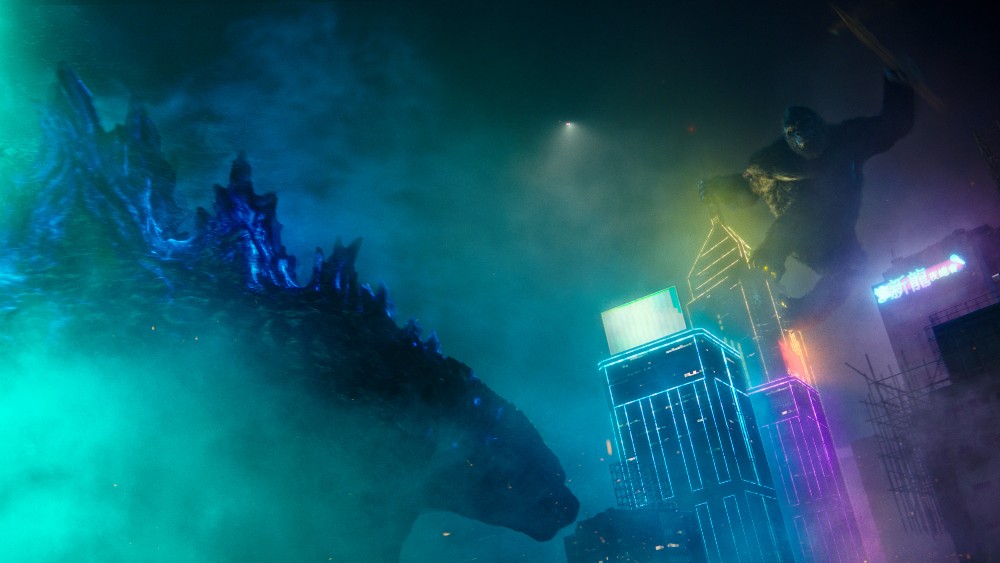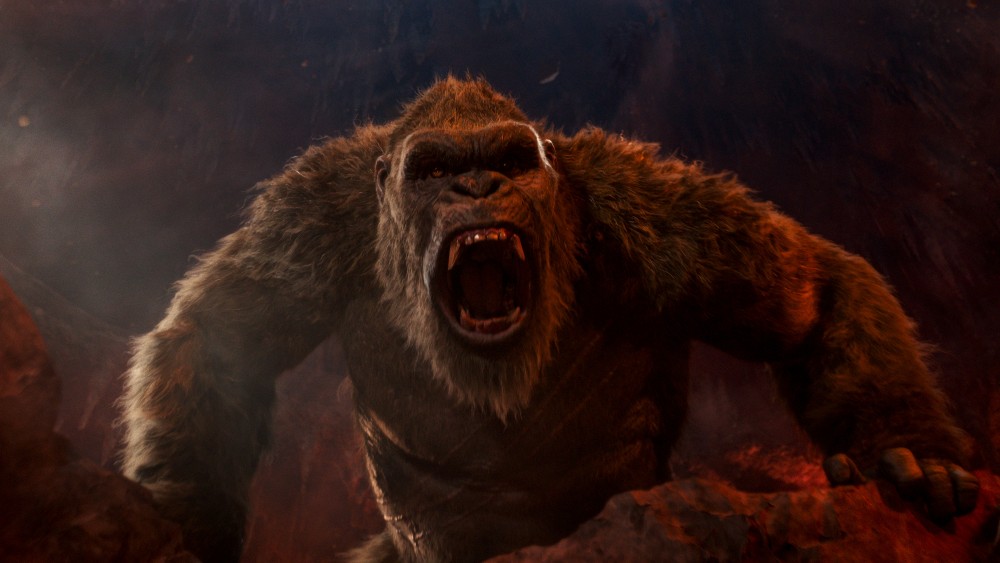
Over the next week, Below the Line will be taking a deep dive into the visual effects necessary to bring Warner Bros. and Legendary Pictures’ Godzilla vs. Kong to enormous life on screen.
In case the title seemed vague, Godzilla vs. Kong brings together two of the biggest movie monsters for the first time in almost sixty years with Director Adam Wingard (The Guest, You’re Next, Blair Witch) pulling together elements introduced in 2017’s Kong: Skull Island and Legendary’s two Godzilla movies, including 2019’s Godzilla, King of the Monsters.
First up is the overall VFX Supervisor, John “DJ” DesJardin, who has been working extensively with Zack Snyder over the past few years, beginning with Watchmen in 2009 and through his DC Universe movies, including Batman vs. Superman: Dawn of Justice. DesJardin was also part of the ordeal that struck Snyder’s next film, Justice League, as the filmmaker left the project, leading to a less-than-satisfying theatrical release. DesJardin was then brought back to shepherd the vast visual effects work needed to finish the four-hour Zack Snyder’s Justice League.
Before connecting with Snyder, DesJardin worked on a number of high-profile movies from the early ‘90s including Terminator 2: Judgment Day and Batman Returns, working as digital and visual effects for a number of movies before becoming VFX Supervisor on The Matrix Reloaded and its sequel, The Matrix Revolutions.
Below the Line spoke to DesJardin last week, and as luck would have it, right before this interview, we had a chance to speak with Bryan Hirota at Scanline VFX, who has worked with DesJardin for over 25 years and was involved with the visual effects on both GvK and ZSJL. Look for that interview later this week.
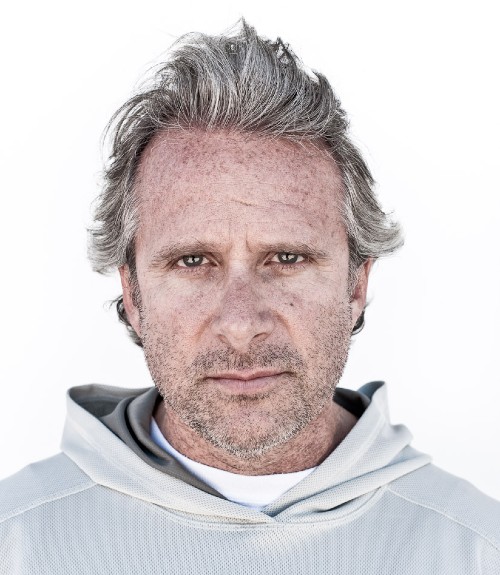
Below the Line: This will mainly be about Godzilla vs. Kong, but I’d also like to talk to you about Justice League. When did you get involved with Godzilla vs. Kong? I assume you had finished Justice League, did Godzilla then went back to Justice League?
John “DJ” DesJardin: Nah, that’s the wrong order. [laughs]
BTL: Oh, really?
DesJardin: To be fair, we finished the theatrical of Justice League — enough said about that — and I took about eight months off to recover from that trauma, and then yeah, Godzilla was the first movie that I got into after that. I think the first time I read the script was March of 2018, and then I was officially on the show, like at the end of May, beginning of June 2018 and very much into prep then and working with previs, etc. etc. Then we shot in Hawaii that fall 2018 and that kicked us off.
BTL: Obviously, the movie was delayed due to COVID partially, but it still feels like a pretty fast turnaround because Godzilla: King of Monsters only came out in 2019, so you were shooting while they were finishing that one.
DesJardin: I’m trying to think of when they actually finished that and when it came out. I feel like we saw it when we were in post already on Godzilla vs. Kong. Thinking back to that first question you asked. We actually finished Godzilla vs. Kong in June of 2020. remotely from home, actually, because we all left Legendary in March to go underground, but then we figured out a pipeline that would allow us to finish the movie with Adam remotely. So we did that. And then there was a month of overlap where we were wrapping up Kong and then de-archiving everything that we needed to get going for Zack Snyder’s Justice League. So Justice League actually got finished six months after we’d finished Godzilla vs. Kong. But Justice League came out before Godzilla vs. Kong. That’s how backwards all of that is.
BTL: You’ve obviously been working in visual effects for a long time, since the ’90s, so were you at a VFX house for a lot of that time?
DesJardin: I was at VIFX (formerly Video Image) — it’s a company that doesn’t exist anymore–from 1984 all the way through the year 2000. I think that was when I finally left and Bryan [Hirota from Scanline] came in. He was a student at UC San Diego, and he used to come up twice a week as an intern and worked the night shift, I think, because I was doing the night shift, too. I met him in the mid 90s, actually, and we just became friends and just always work together forever after that and that continues to this day.
BTL: You’ve been working with Zack since Watchmen. Would you generally be working with him on whatever he does next or do you just work wherever there’s work?
DesJardin: Yeah, I mean, I prefer it. Zack and I have similar aesthetics, and I just like him as my brother. I love him and Deb, and I really like the stuff that they choose to do. He’s given me an opportunity to work on really interesting things, not just technically, but thematically. Unfortunately, a lot of what I do, I guess a lot of what any of us does in this business, it’s all timing-related. He was taking a long break after all the trauma surrounding Justice League years ago. He was doing a lot of writing and trying to figure out his next project, and so when Godzilla vs Kong came up, I just said, “Look, do you have anything?” and he goes, “Nothing right now” and then by the time Army of the Dead came up, I was already done shooting Godzilla vs Kong, but I was heavily into posting it. So that’s just the way the timing works. So he did that for Netflix with another supervisor and that’s going to come out in May. Now I’m working on Flash with Andy Muschietti, and it’s been a lot of fun. And who knows? Maybe I can circle back and reunite with Zach and Deb and everybody when this is done. We’ll see. It’s all timing
BTL: What were some of your conversations with Adam and was his Production Designer involved early on as well?
DesJardin: I came into the actual preproduction pretty late in the game compared to what I usually do. They’d already been going for months, actually, and already gone through a couple of versions of the script before I came on. By the time I walked in– which is technically like June 1, 2018 — they already had like the war room with all the concepts laid out. They’d already been working with Third Floor on the previs for the ocean battle — that was pretty far along — and Adam [Wingard] was already doing a lot of meetings and giving a lot of feedback on that. So I was basically kind of sitting listening to a lot of the ideas floating around the room for a long time before I was like, “Okay, now I feel like I have this in my head, and I can start to wrestle this thing to the ground and help get it made.” It usually takes a little while, like a few weeks, to kind of get up to speed. Before I knew it, it was August, we were relocating to Hawaii, and then we’re kind of off and all running around together, speaking the same language for the film. So that’s kind of how I got into that.
BTL: It’s an interesting movie, because Legendary had already made a Kong movie and two Godzilla movies, so there were assets done that could be shared, so what’s the first step once you got up to speed to get things moving?
DesJardin: I’m pretty sure by the time I came on, we already had–or maybe we were about to get the assets from the other movie — so we were getting ILM (Industrial Light and Magic) Kong from Skull Island, we were getting MPC‘s Godzilla from King of the Monsters. We didn’t alter Godzilla at all, but we did age up Kong and scale him up as well, the idea being that at least in the way I was told it was like, “Well, think of him as being an adolescent in Skull Island. So he grew, and he got grayer and his hair got longer,” and that’s kind of how we handled him.
BTL: Is that what you were talking about with timing where ILM was already busy on something else and they couldn’t continue work on this or was it just a decision between you and Adam to go a different direction?
DesJardin: No, ILM did that whole show — they’re good at handling whole shows like that. I think we just felt like this show was so diverse in terms of locations, like the scope of it was global, it was planet wide. Skull Island was Skull Island, and we needed to be in Hollow Earth. We needed to be in Skull Island again, or at least this built up part of it to be Kong’s prison, for lack of a better way of talking about it. We need to be out on the ocean. We just had all these different looks and things that needed to be developed in not a very long amount of time, so we figured it was better. I was working with a producer I’d worked with before Tamara Kent, and she and I talked about it from the get-go. She especially was like, “We need to have a bunch of different facilities on this to get this done in time. Here’s all these different environments, we’re gonna have to create, let’s go split it up.” And that’s what we did. It just became a natural fit for the facilities that we chose. I don’t know if ILM was too busy or not–they may have been–but I think that we ended up with a good group of teams that really played to their strengths to get the show done.
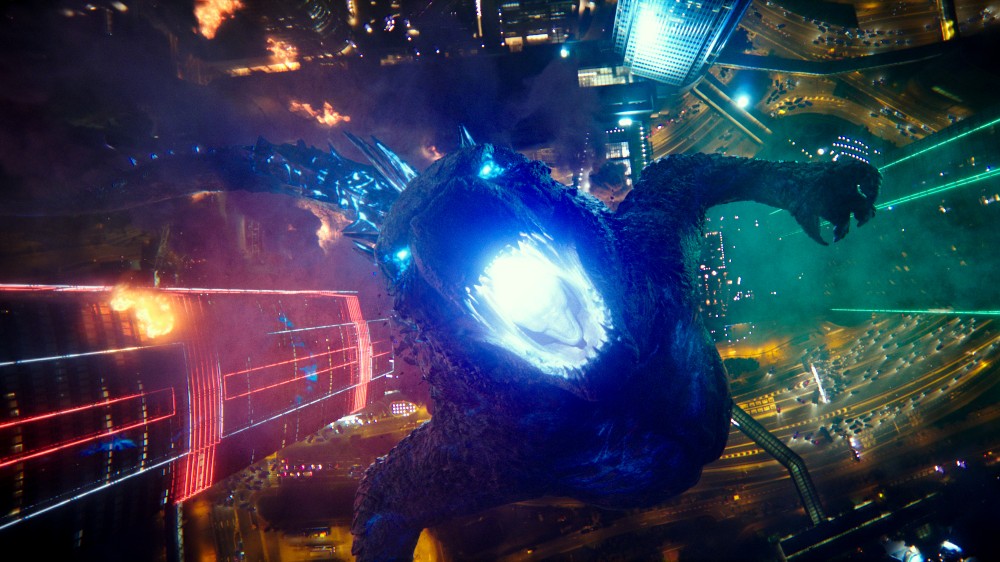
BTL: The movie has a number of really big action set pieces, like four of five including the fight on the ocean and the time spent in Hollow Earth. How and why did you want to split these sequence up? I know Weta really focused on Hollow Earth and Bryan told me that Scanline really focused on the ocean and Hong Kong battles. Was there some logical way that things could be divided?
DesJardin: If I look back at my past, I think I tend to break up shows, according to environment or set piece in the scene. I don’t do it based on characters. Even with Justice League, everybody asked me, “Well, who handled digital Batman? Who handled digital Superman?” Well, everybody did. Everybody had to be able to handle every character in Justice League. It’s the same thing with Godzilla and Kong.
I think that when Tamara and I wrote down every scene on a whiteboard, we looked at it and said, “Well, we know we have to have Scanline do the ocean battle, because they’re just gonna kill that. It’s gonna be great. And then we just have to convince the filmmakers that it’s going to be fine for them to animate the characters, because that was the concern that came back to us as well. Scanline can do all these major effects, but can they animate characters? And I knew they could, because I’ve worked with Bryan and Scanline for a long time, and I knew they could do it. We just did a couple of test shots, one of which is the big aircraft carrier punch shot that’s in everything that they did. That is an early test, just to prove that they could do it. That was all they needed to do to make sure that filmmakers were satisfied, that was gonna be fine. With MPC, we wanted to do a huge, visually-striking chunk of the battle, because they’d done other stuff with Godzilla before, so we thought that might be fun for them to do this little more surreal thing.
Weta I always had in mind is they’re really good at world building anyway, and Hollow Earth had some concepts to point us in the right direction to developing that. But I also knew that it was going to take the most time to converge on a look. They’re really good at that, and we can bring a lot of firepower to bear when it comes to like building up the jungle or filling out the landscape. They can animate a lot of different creatures, which we knew we’re gonna have to populate that world with some of that stuff, too. And also, I knew that they would really knock it out of the park, any of the quiet Kong acting moments.
That’s how the movie opens, him waking up and doing all of that more subtle stuff, although that’s not to take away the subtlety that MPC brought or Scanline brought to some of their quiet moments, whether it’s in the fight, or even like on the transport ship in the rain, which I think is a really beautiful moment that Scanline had between Kong and Jia.
I just felt initially, when we white boarded it out, it was like, “Okay, Weta gets all the big emotional acting heavy lifting, and everybody else gets all the big action set pieces in environments they already kind of know how to do.” That was the initial split, and then I think that there was just a lot of other good subtlety and detail and talent that was brought to bear beyond what I initially thought everybody would be strong with.
BTL: Are you working from L.A. the whole time you’re doing the post on both Godzilla and Zack’s Justice League?
DesJardin: Yeah, we walked out of Legendary, where our normal posting offices were, in the middle of March, and we never went back in except maybe to clear our stuff out. We finished all that post from home, like I said, in June of 2020. There’s a little bit of overlap, and we revved up and de-archived everything that we needed to on Zack’s Justice League from June all the way through February of this year. All from home, that was done completely from home.
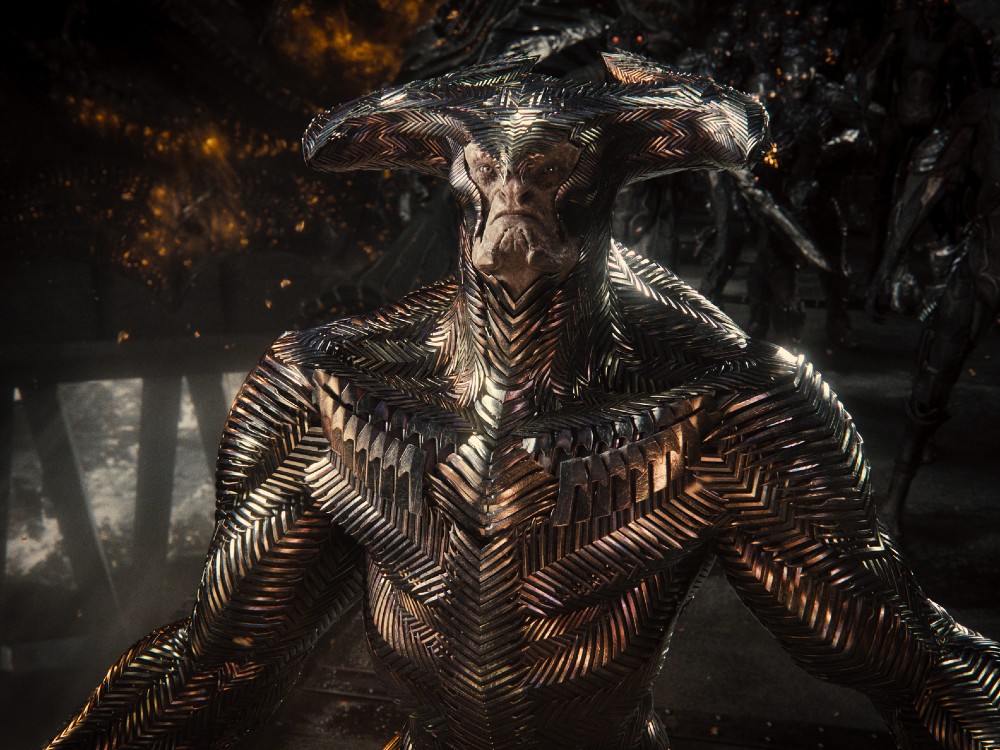
BTL: I know Weta’s in New Zealand and Bryan told me that Scanline has effects shops all over the world that he can integrate. What’s your timeline during a normal day to communicate with everyone and make it all work?
DesJardin: Mine’s pretty normal actually, because you kind of juggle the meeting times. If I remember right, you go [with] London in the morning, so we do all our Double Negative calls in the morning and then it’s kind of like a toss-up. What I think we did well in the afternoon Scanline could be wherever Bryan felt it was convenient to do, because he was basically dealing with teams I think in Vancouver. Who am I missing now? Weta, Scanline, DNeg. Yeah, that was pretty much it. Crafty Apes did some other stuff for us on Justice League.
That day was actually pretty normal. It was just it. The thing I want to be clear about with Justice League is despite the fact that my day was fairly normal. It was the hardest project collectively, I think we’ve ever done. It just was. It was because it was a forensics nightmare that we couldn’t have even guessed at when we jumped into it. It was funny, because from time to time, I talked to Debbie Snyder and Zack, or I’d even talk to my boss at Warner Brothers, Annie Kolbe, and there was a little bit of an attitude for a while like, “Well, this is easier, right? Because we already shot it. We already did it before, right?” And I think it took just a couple of meetings of Tamara and me tearing our hair out on Zoom calls going, “No, you can’t even imagine the nightmare that we’re going through now, trying to figure out, shot by shot, what status it was when we left it.” That was the nightmarish part of the whole thing. Finally, they got on board with what we were saying pretty quickly and had a lot of sympathy for what we were going through, but I always want to stress that whenever I talk about that movie. I’m really proud of what we did on that movie. I’m happy that it exists. I’m happy to have done it with Zack and Deb the way that we did it, and I’m happy for them. I just don’t ever want to do a project in that order that way ever again. It’s just too hard! [laughs]
BTL: I got that impression when I spoke to the Weta guys, although Kevin Smith and Anders Langlands only came on board for the extended Snyder Cut. This is one of those unprecedented things that never really happens, and probably should never happen again, but I think everyone is happier because it turned out just a far better version of the movie Zack set out to make.
DesJardin: We’re all proud of it, there’s no doubt about it. It’s just that when everybody wants to know, “What’s your favorite shot?” I’m just like, “None of them that way. They were all super hard!” [laughs]
BTL: I have a general question before we wrap up. I was curious about the sharing of assets between vendors and how it works when there’s so much competition in the world of VFX and some might not want to let too much about how they do things be known by what’s essentially their competition?
DesJardin: No, I mean, the type of stuff that we’re doing, there might be some differences, for example, in how characters get set up, like, if they’re talking or they’re emoting or whatever the character rig is, for fine tuning things like that. But I’ve never had a problem. I don’t like to get in the way of data transfers like that. So usually, if, for example, Weta is building Steppenwolf, and we’re developing this way that the armor moves. It’s like mood armor — he’s spiky, when he’s mad, he’s a little more subdued when he’s not — they’ve shared data on a lot of different projects that I’ve been on. So I think that there’s just a trust on how things get passed back and forth. Generally, my production team and I don’t get in the way of that. We try to facilitate it when we can, but we’ll also put them in direct contact with each other, so that we’re not like a bottleneck, in terms of that. If there’s details that need to be worked out, they can work it out with each other, which they do.
I’ve never really heard of a lot of problems on that end of things. I will admit that on the project I’m on now, there are some proprietary things that we’re dealing with, which are difficult to transfer, and therefore, we’re probably not going to transfer, and I have to have one team do a particular thing. A lot of the stuff in those other movies wasn’t really like that. You could say, “Here’s a heat vision thing, here’s how we kind of developed it here, here’s how we can hand it off, feel free to do your version that looks like that.” That’s a lot of my speech, when it comes to issues like that.
BTL: I got the impression from talking to Weta that when they work with other VFX house, it’s all about whatever works best and delivers the best results, then that’s the way to go.
DesJardin: Yeah, that’s a really good way to summarize it is that we’re not real precious with a lot of the things that we’re coming up with. We like being able to distribute them and have a lot of people work on them, and even in some cases, make it their own to get a certain thing a little better, a little bit more punch to it. You know, it’s fine. It’s totally fine. Nobody’s feelings get hurt. I don’t think anybody’s worried about company secrets when it comes to stuff like that.
BTL: Well, it’s great talking to you. You were supposed to be the first person I spoke to about Godzilla vs. Kong but you ended up being the last. I’ll try to talk to you first next time.
DesJardin: It’s quite alright. It’s not necessary. I love all those guys a lot. I love the Kevins at Weta, and I love Anders, too. I’ve kind of worked around and with those guys over the years, and Bryan I’ve worked with forever. It’s good that you’re talking to all of them, because they’re great. I always prefer to hear their stories more than mine. [laughs]
BTL: Good luck on The Flash. I’ll be watching that one very closely, because next to Godzilla, The Flash is one of my all-time favorite characters, as well.
DesJardin: Yeah, I think it’s gonna be a lot of fun, and we’re doing a lot of very interesting things that I feel like they’re going to come out great. I just wish I could go into the future and see if it all turned out alright.
Godzilla vs. Kong is now playing in theaters and on HBO Max, while Zack Snyder’s Justice League is on HBO Max. Look for Part 2 with Weta Digital VFX Supervisor Kevin Smith and animator David Clayton in the next couple days.
All pictures courtesy of Warner Bros. and Legendary Pictures, except where noted.

